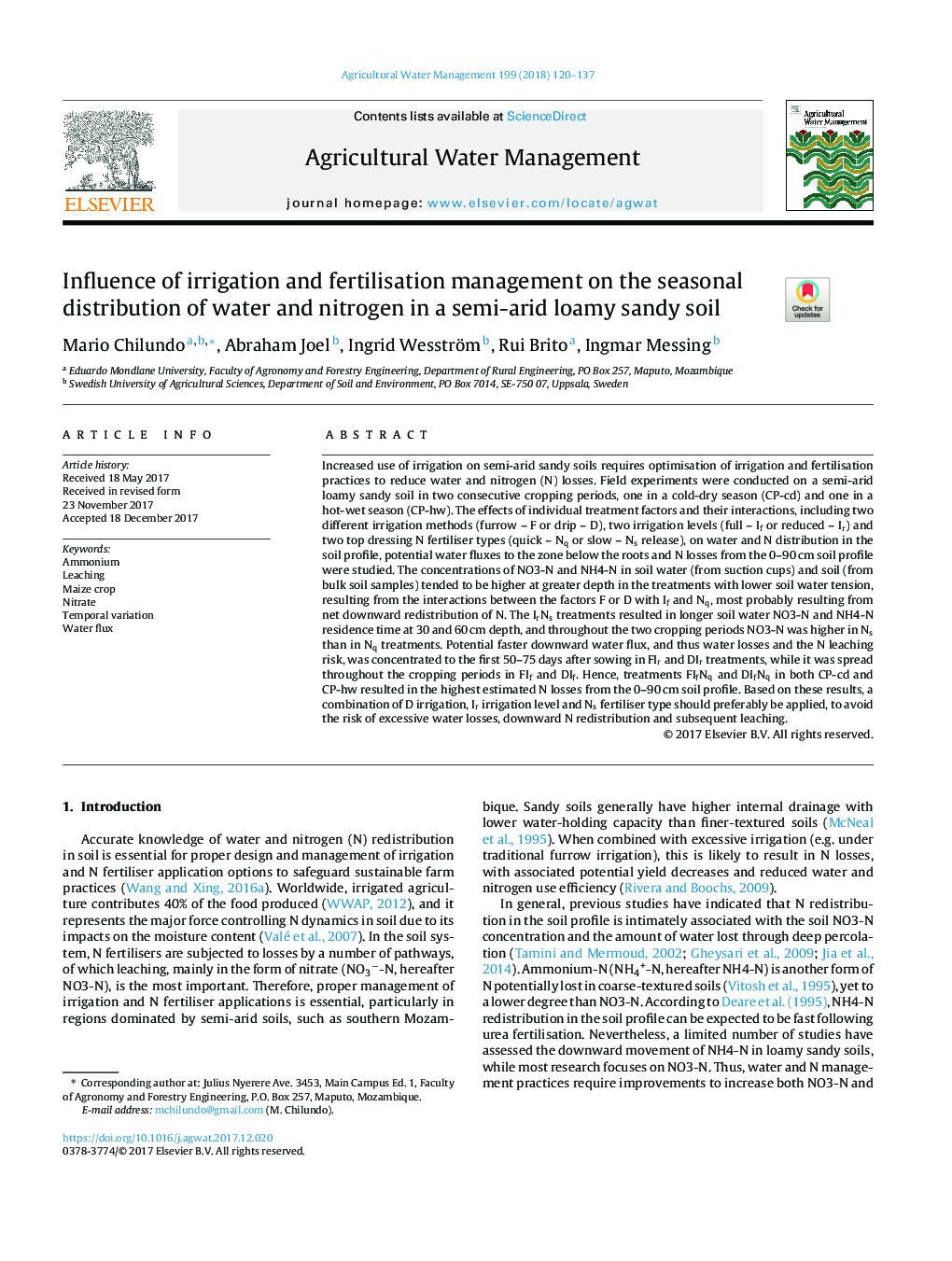| کد مقاله | کد نشریه | سال انتشار | مقاله انگلیسی | نسخه تمام متن |
|---|---|---|---|---|
| 8873131 | 1622881 | 2018 | 18 صفحه PDF | دانلود رایگان |
عنوان انگلیسی مقاله ISI
Influence of irrigation and fertilisation management on the seasonal distribution of water and nitrogen in a semi-arid loamy sandy soil
ترجمه فارسی عنوان
تأثیر مدیریت آبیاری و بارورسازی بر توزیع فصلی آب و نیتروژن در خاک شنی لومی نیمه خشک
دانلود مقاله + سفارش ترجمه
دانلود مقاله ISI انگلیسی
رایگان برای ایرانیان
کلمات کلیدی
آمونیوم، شستن محصول ذرت، نیترات، تنوع زمانی، شار آب،
موضوعات مرتبط
علوم زیستی و بیوفناوری
علوم کشاورزی و بیولوژیک
علوم زراعت و اصلاح نباتات
چکیده انگلیسی
Increased use of irrigation on semi-arid sandy soils requires optimisation of irrigation and fertilisation practices to reduce water and nitrogen (N) losses. Field experiments were conducted on a semi-arid loamy sandy soil in two consecutive cropping periods, one in a cold-dry season (CP-cd) and one in a hot-wet season (CP-hw). The effects of individual treatment factors and their interactions, including two different irrigation methods (furrow - F or drip - D), two irrigation levels (full - If or reduced - Ir) and two top dressing N fertiliser types (quick - Nq or slow - Ns release), on water and N distribution in the soil profile, potential water fluxes to the zone below the roots and N losses from the 0-90â¯cm soil profile were studied. The concentrations of NO3-N and NH4-N in soil water (from suction cups) and soil (from bulk soil samples) tended to be higher at greater depth in the treatments with lower soil water tension, resulting from the interactions between the factors F or D with If and Nq, most probably resulting from net downward redistribution of N. The IrNs treatments resulted in longer soil water NO3-N and NH4-N residence time at 30 and 60â¯cm depth, and throughout the two cropping periods NO3-N was higher in Ns than in Nq treatments. Potential faster downward water flux, and thus water losses and the N leaching risk, was concentrated to the first 50-75â¯days after sowing in FIr and DIr treatments, while it was spread throughout the cropping periods in FIf and DIf. Hence, treatments FIfNq and DIfNq in both CP-cd and CP-hw resulted in the highest estimated N losses from the 0-90â¯cm soil profile. Based on these results, a combination of D irrigation, Ir irrigation level and Ns fertiliser type should preferably be applied, to avoid the risk of excessive water losses, downward N redistribution and subsequent leaching.
ناشر
Database: Elsevier - ScienceDirect (ساینس دایرکت)
Journal: Agricultural Water Management - Volume 199, February 2018, Pages 120-137
Journal: Agricultural Water Management - Volume 199, February 2018, Pages 120-137
نویسندگان
Mario Chilundo, Abraham Joel, Ingrid Wesström, Rui Brito, Ingmar Messing,
